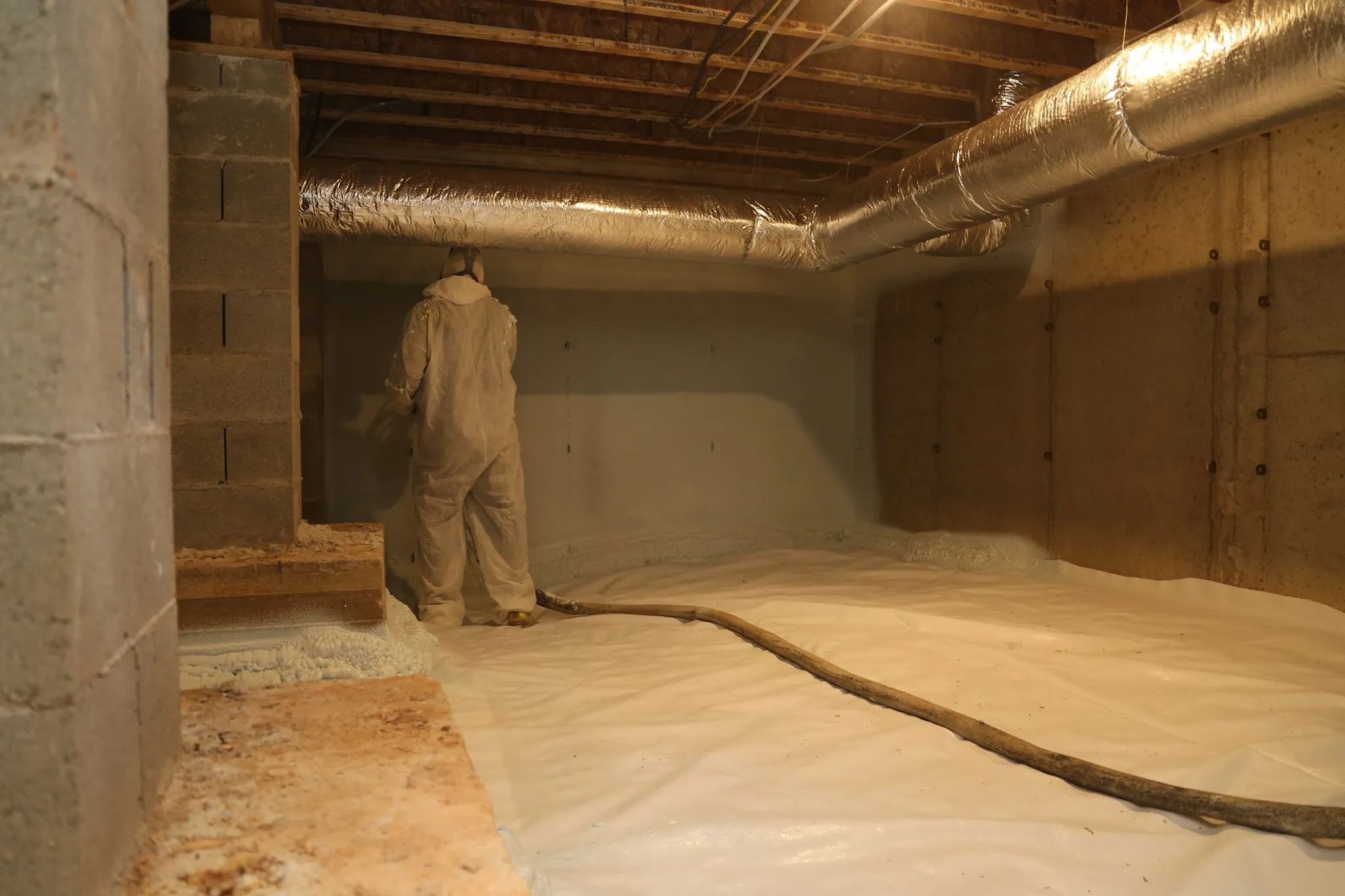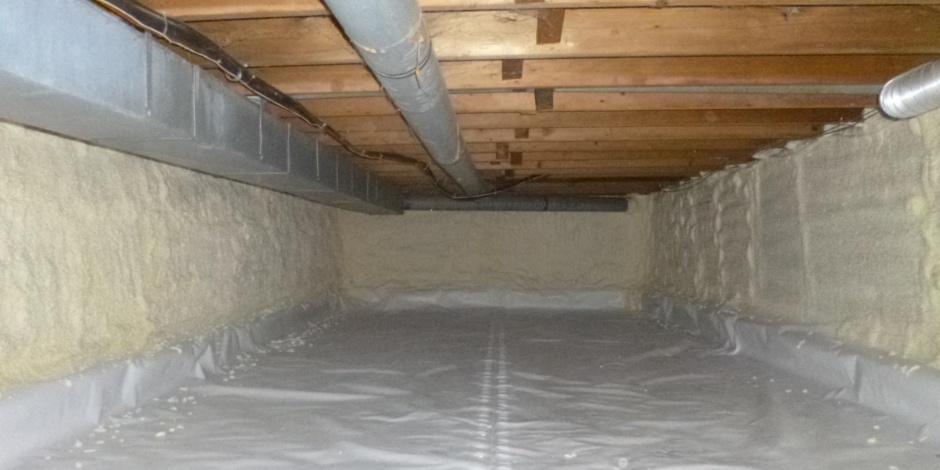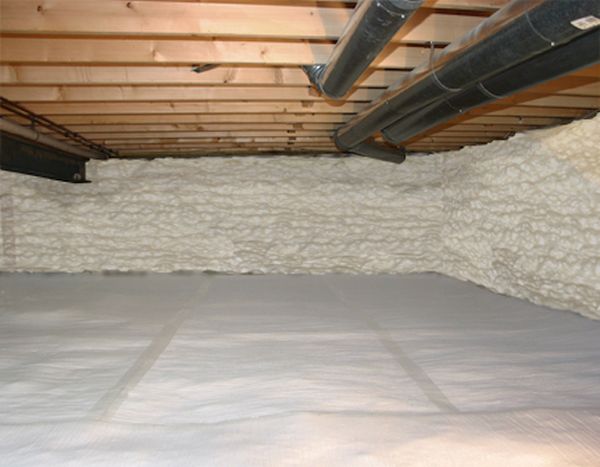Moisture from the ground is one of the most persistent threats to homes and buildings with crawl spaces. Whether you’re a homeowner or manage commercial properties, ground moisture under a structure can lead to mold, rot, and reduced indoor air quality. Proper crawl space insulation service is one of the most effective ways to control this moisture and protect the structure from long-term damage.
This article explains how crawl space insulation functions to reduce ground moisture, the materials involved, and how it compares with other approaches to moisture control.
How Moisture Enters Crawl Spaces and Why It Matters
Crawl spaces are prone to moisture buildup due to their proximity to the ground. Without proper insulation or moisture barriers, humidity levels rise and affect the entire building structure.
Common Moisture Sources in Crawl Spaces
- Ground vapor diffusion: Water vapor naturally rises from the soil.
- Open vents: Outdoor air carries humidity into the space.
- Plumbing leaks: Small leaks can go unnoticed and increase humidity.
- Poor drainage: Water collects around or under the foundation.
Consequences of Excess Moisture
- Promotes mold and mildew growth
- Weakens floor joists and subfloor materials
- Increases pest activity (e.g., termites, rodents)
- Leads to musty indoor odors
- Reduces HVAC efficiency by cooling the underside of floors
How Crawl Space Insulation Reduces Ground Moisture
Insulation isn’t just about thermal performance—it plays a central role in moisture management when applied correctly.
Barrier and Seal Function
Insulation materials like closed-cell spray foam act as both a thermal insulator and a vapor barrier, blocking moisture migration from the soil upward.
Surface Temperature Stabilization
Professional spray foam insulation service raises the surface temperature of exposed materials, which reduces the likelihood of condensation forming under the home.
Air Exchange Control
By insulating and sealing off crawl space walls and subfloors, you reduce outside air intrusion, which limits humidity fluctuations that cause condensation and moisture problems.
Recommended Insulation Materials for Moisture Control
Not all insulation types are equally effective for moisture control. Each material offers different performance characteristics.
Closed-Cell Spray Foam
- Moisture resistance: Very high
- Thermal value: R-6 to R-7 per inch
- Application: Adheres directly to surfaces, sealing gaps
- Durability: Long-lasting with low degradation
Rigid Foam Board
- Moisture resistance: Moderate to high
- Thermal value: R-4 to R-6 per inch
- Application: Attached to crawl space walls or floors
- Durability: Good, but joints may require sealing
Fiberglass Batts (Not Preferred)
- Moisture resistance: Low
- Thermal value: R-3 to R-4 per inch
- Application: Often installed under floor joists
- Durability: Degrades in humid environments
Crawl Space Insulation vs Vapor Barrier: What’s the Difference?
Insulation and vapor barriers serve different but complementary purposes in crawl space moisture management. Here’s how they compare:
| Feature | Crawl Space Insulation | Vapor Barrier |
|---|---|---|
| Primary Function | Blocks heat transfer and air | Blocks ground moisture and vapor |
| Material | Foam, board, batts | Plastic sheeting (6–20 mil) |
| Placement | Walls, subfloor | Directly on ground |
| Moisture Control | Indirect (via sealing + thermal buffer) | Direct (physical moisture block) |
| Durability | 10–25 years (foam) | 5–15 years, depending on thickness |
Both should be used together in most crawl space encapsulation strategies for full protection.
Crawl Space Encapsulation: A Complete Solution
Encapsulation involves sealing the entire crawl space environment to reduce moisture and increase energy efficiency. This process includes insulation, a vapor barrier, and sealing all vents and openings.
Steps in Encapsulation
- Install vapor barrier on the ground and piers
- Seal vents and air leaks with spray foam or covers
- Insulate walls with closed-cell foam or rigid board
- Condition the air via dehumidifier or HVAC tie-in
Benefits of Encapsulation
- Eliminates ground moisture intrusion
- Improves indoor air quality
- Reduces HVAC system workload
- Prevents structural decay
Choosing the Right Crawl Space Insulation for Your Property
Whether you’re insulating a residential or commercial crawl space, material choice and installation quality are critical.
Residential Priorities
- Focus on air sealing with foam to control humidity
- Combine with vapor barrier to handle soil vapor
- Reduce cold floors in winter months
Commercial Priorities
- Emphasize durability and long-term ROI
- Protect utility lines and ductwork running through crawl space
- Coordinate with HVAC systems for efficient conditioning
What to Avoid
- Installing fiberglass in vented or humid crawl spaces
- Skipping vapor barrier under foam insulation
- Using open-cell foam where moisture is consistently present
FAQs
Is closed-cell spray foam better than fiberglass for crawl spaces? Yes. Closed-cell foam resists moisture, air, and mold, whereas fiberglass absorbs water and degrades over time in humid environments.
Can insulation alone fix crawl space moisture issues? No. Insulation must work in tandem with vapor barriers and proper drainage systems to effectively manage ground moisture.
Should I insulate the crawl space walls or the subfloor? Insulating the walls is generally preferred for sealed crawl spaces. It keeps the area within the home’s thermal envelope and reduces moisture migration more effectively.
How thick should crawl space insulation be? For closed-cell foam, 2–3 inches is typical. For rigid boards, use 1.5 — 2 inches. Thickness may vary depending on local code and moisture exposure levels.
Can ground moisture in crawl spaces affect indoor air quality? Yes. Humid crawl spaces can introduce mold spores and allergens into indoor air, especially in homes with leaky ducts or open floor penetrations.
Conclusion
An expert spray foam insulation contractor plays a critical role in managing ground moisture. When properly selected and installed—especially as part of an encapsulation system—it reduces humidity levels, protects the structure, and improves indoor air quality.
Closed-cell spray foam is often the most effective option due to its vapor-resistant properties and sealing capabilities. However, it should always be combined with a ground vapor barrier for complete protection.
For residential and commercial properties alike, crawl space insulation isn’t just a comfort upgrade—it’s a structural safeguard against long-term water damage and air quality concerns.
Author: Jeremy Fields brings over a decade of experience in construction and business to Ozark Eco Foam. With a background in both residential and commercial projects, he focuses on completing each insulation job with accuracy and attention to detail. Ozark Eco Foam reflects his commitment to quality work and practical solutions built on years of hands-on industry knowledge.
Reviewer: Amelia Young contributed insights from 10 years in spray foam insulation. Her review helped sharpen the article’s focus on customer engagement and clear service messaging.


